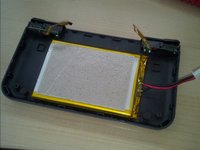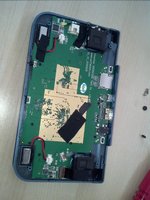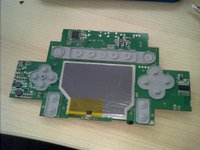Off-topic, but this is kind of harsh, all the games in my test set will run at realtime speed w/fs1 with the possible exception of one that's doing some unusual CPU heavy stuff. This is on a non-overclocked 1GHz Pandora, so you can get 15%+ more w/overclocking. I think only a small minority of pathological games like Golden Sun would really be unplayable. I will be very impressed if PCSX2 on Atom x5-8550 comes anywhere remotely close to this level of support.
Don't worry, I didn't mean it to be harsh, DraStic is an AMAZING piece of software, and many games run great on the Pandora, but I also stumbled across a few that didn't. (Okamiden was mostly fine, but some parts were almost unplayable slow, I think Kingdom Hearts also was very slow, as well as some others...)

And while many games run playable, they often use a bit of frameskip, and I know there are gamers out there who are sensitive with that.
However, I still think it's worth listing PS2 and GC as a pro for GPD Win with heavy caveats. Because there is simply a much different level of software support. PCSX2 has shown zero direction of gaining ARM support, Play! is probably years behind in efficiency and compatibility, and Dolphin requires GPU features Pyra won't support. So on GPD Win there will be some class of PS2 games you can play and some (probably smaller) class of GC/Wii games. On Pyra that class will be nearly zero unless some really big software developments happen. At the very least this is a fair statement of how things are right now.
I know the Pyra can't do that (right now) at all, but I learned to be careful with telling people how stuff runs (maybe because of Craig...)
He was telling everyone the Pandora can run fullspeed N64, and in reality, it mostly only was Mario64.
I am rather careful telling someone what any system can do, unless I really know it can do all that in fullspeed.
Also, I haven't played a single PS2 game on my Core i7 which didn't have some slowdowns during gameplay (not right at the beginning, but usually games get more hectic and use more effects in later parts), be it Xenosaga 2 or 3, Suikoden 3, Atelier Iris 2, etc.
So I would be very careful here as well... from my experience on the PC, PCSX2 is VERY very power hungry, even though the Pyra will not be able to run ANY PS2 games from the start (and maybe never do it with the OMAP5), I wouldn't be sure the Win can do it flawlessly.
That's all I'm pointing out here. It might work better as you expect, but it could also work a lot worse than most people expect.
[doublepost=1459270736,1459270683][/doublepost]
Yeah, off-topic: it may be anecdotal evidence, but I have yet to try a game in Drastic that was unplayable on my 1GHz unit.
As mentioned, I stumbled accross some, but forgot which ones they were.
Well Re:Coded doesn't work, but that's not a speed issue - it simply crashes

EDIT: I checked a few things I had on my SD Card.
Final Fantasy: Heroes of the Four Lights has major stuttering, I also remember one of the Mana games had a lot of stuttering...
Maybe I just stumbled accross a few of them accidentally (kind of bad luck

)




